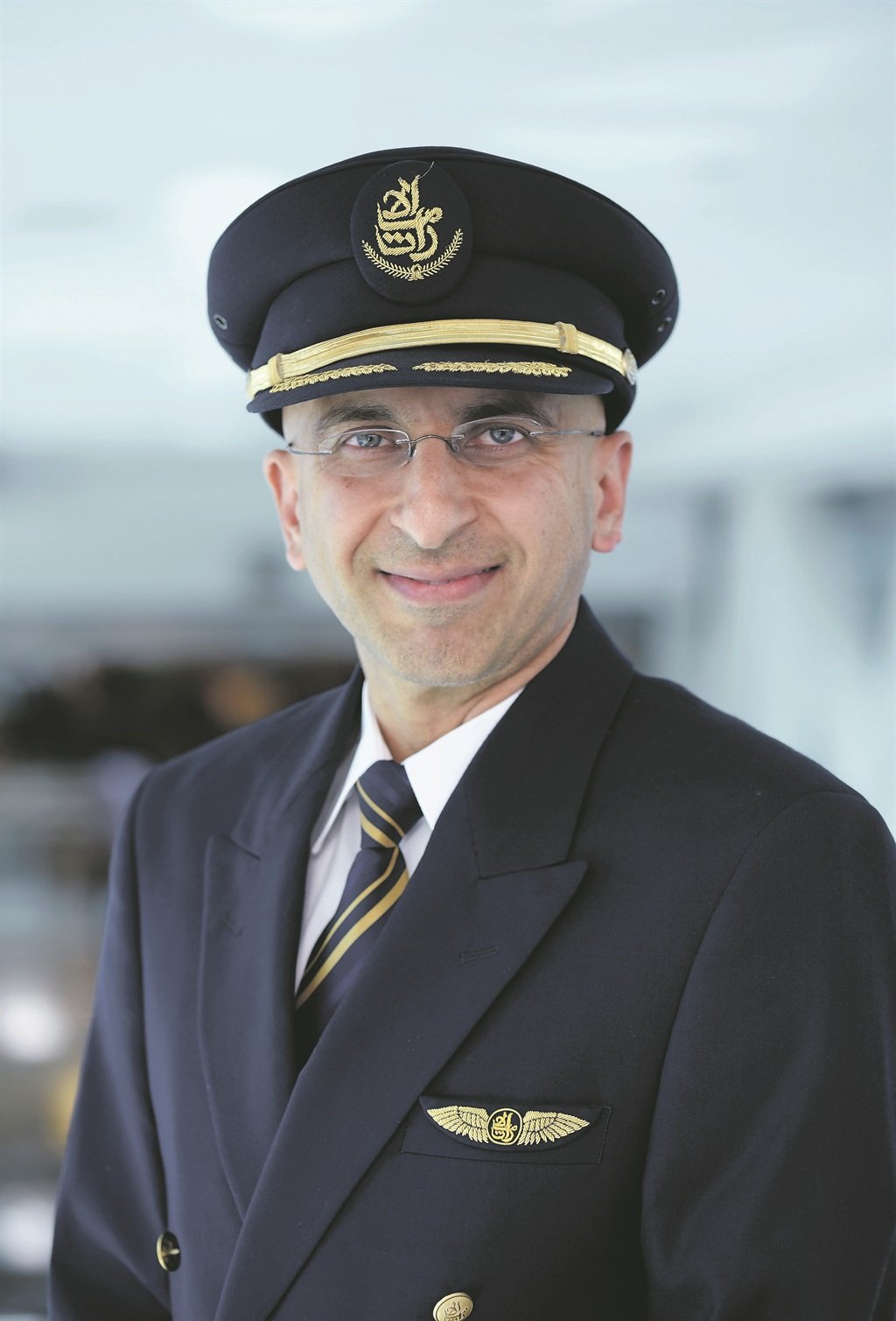
Captain Mohammad Omar is a commercial pilot with Emirates. He explains what qualifications and temperament you need to become one.
How do you become a commercial pilot?
Before you are allowed to pilot a commercial jet, you have to pass many ground school exams and a number of flight tests to obtain a frozen Airline Transport Pilot’s Licence (ATPL). Once you have obtained this licence, you can apply for a job as a first officer with an airline. You would also need to obtain a Class 1 medical certificate through your country’s civil aviation authority.
The frozen ATPL is actually a collection of licences grouped together. You’ll need to get a commercial pilot’s licence and a multi-engine instrument rating, as well as pass theory exams.
To obtain these licences, you can either apply directly to an airline that is recruiting for a cadet pilot programme or you can obtain your licences through a flight training organisation. If you choose to complete the training yourself, you can do a full-time or part-time course, depending upon your finances and available time.
If you apply for an airline cadet programme, you will have the security of walking straight into a job as a first officer when you complete the course. This is the most secure way of entering the industry. Many airlines offer this course free to their citizens. Entry requirements are quite stringent as only limited slots are available. Some airlines offer this programme to anyone for a fee. The cost varies depending on the airline and the country in which the training is carried out.
In some countries, such as the US, you might need a bachelor’s degree to join a major airline. There are many aviation universities that offer aviation-related degrees that run concurrently with flight training.
The minimum time to become an airline pilot from scratch is about 18 months. It could take much longer if you opt to do it part time.
Pilot training requirements and licensing regulations can vary considerably around the world. Also, most countries will only allow you to fly a locally registered aircraft with a pilot’s
licence issued by that country. Some countries will validate another country’s licence by having you write an air law exam, while other countries will require you to pass all the theory exams, take a flight test and pase a Class 1 medical exam in that country.
What is the life of a pilot like?
Being a pilot is challenging. Unlike most other professions, a pilot doesn’t stop studying and developing. You’ll need to constantly read about all the changes and enhancements taking place within the airline and the overall industry. There are also simulator checks that you will have to undergo every six months. You also have to stay physically fit to pass the annual medical check-up.
This is not easy if you do not have desire and motivation, which most pilots who are passionate about their jobs have.
The vast destination network that Emirates has creates its own challenges. We operate in many different environments – you could be flying to an airport with state-of-the-art navigation and air traffic control facilities one day and then to another airport with high terrain and limited facilities the next day. Some runways can also pose challenges during landing. For example, special simulator training is required before you can land in the Seychelles on runway 13. I enjoy landing at the challenging airports.
Jet lag is another challenge. Every pilot has to find his or her own way to cope with this challenge, and I normally try to soak up a lot of sun as it helps me to adjust.
With the challenges come rewards. Not having a routine is my favourite part of my job. We get to fly to many interesting destinations all over the world, and get to spend 24 hours in most destinations and 48 hours in others.
This time is meant to facilitate the rest for the return trip, but there is also ample time to explore the destination. I use this time to meet local people and also sample the local cuisine. I have met some amazing people from many different countries. It has been an educational lesson for me.
During the cruise phase of a typical flight, we have to speak at specified points to air traffic control, and also keep a check on our time and fuel.
We also use this time to familiarise ourselves with en route airports in case we need to use them in an emergency situation.
On the longer flights, depending on the length of the flight, we carry either one or two extra pilots. This enables us to have rest in the crew bunks provided on the aircraft. Sleeping in the air is not meant to replace a full night’s sleep that you might get in a bed, but it allows you to be rested enough to perform your duties.
I normally just try to relax by watching a movie, listening to some music and sleeping for a little while.
How long have you been a pilot?
I am from Johannesburg and have been a pilot for 27 years. I have been with Emirates for the past 15 years.
What do you love most about flying?
The thing I love most about flying is working with colleagues from a multitude of nationalities and cultural backgrounds. It has really been an educational experience that I feel has made me better as a person. I have also had the opportunity to see many places that I would never have visited on my own.
- Hold a valid private pilot’s licence (PPL) and night rating
- Be 18 or older
- Hold a Class 1 medical certificate, which will show that you are mentally and physically fit to fly
- Pass the general radio licence exam
- Have a minimum of 200 flying hours, of which 40 hours must be instrument flight training; 20 hours may be done on an approved flight simulator; and a minimum of 100 hours as a pilot in command is required, of which at least 50 hours must be cross-country flight time
- Successfully pass eight online examinations at the Civil Aviation Authority (pass mark 75%). These examinations include flight planning, navigation, meteorology and air law
- Complete a commercial pilot’s licence (CPL) general flight test in an advanced aircraft with a Grade 1 designated flight examiner. The instrument flight test is usually combined with the CPL flight test in one flight
Once you have accumulated the required flying hours, completed your instrument rating and passed all examinations and tests, your training documentation will be checked and sent to the Civil Aviation Authority. You will need to pay a fee to receive your CPL and have your PPL upgraded to a CPL.
Funding and timing
Most pilots in South Africa pay for their own training, which will cost about R1 million to reach the CPL level. Because of this, few people can afford to complete their qualification and required flying hours in one full-time slot. One funding alternative is to do your pilot’s training with the SA Air Force before going on to commercial piloting. There will probably be a work-back period or similar ongoing commitments to honour if you go this route.
Talk to us
What career questions do you have?
SMS us on 35697 with the keyword CAREERS and ask your question. Please include your name. SMSes cost R1.50




 Publications
Publications
 Partners
Partners








